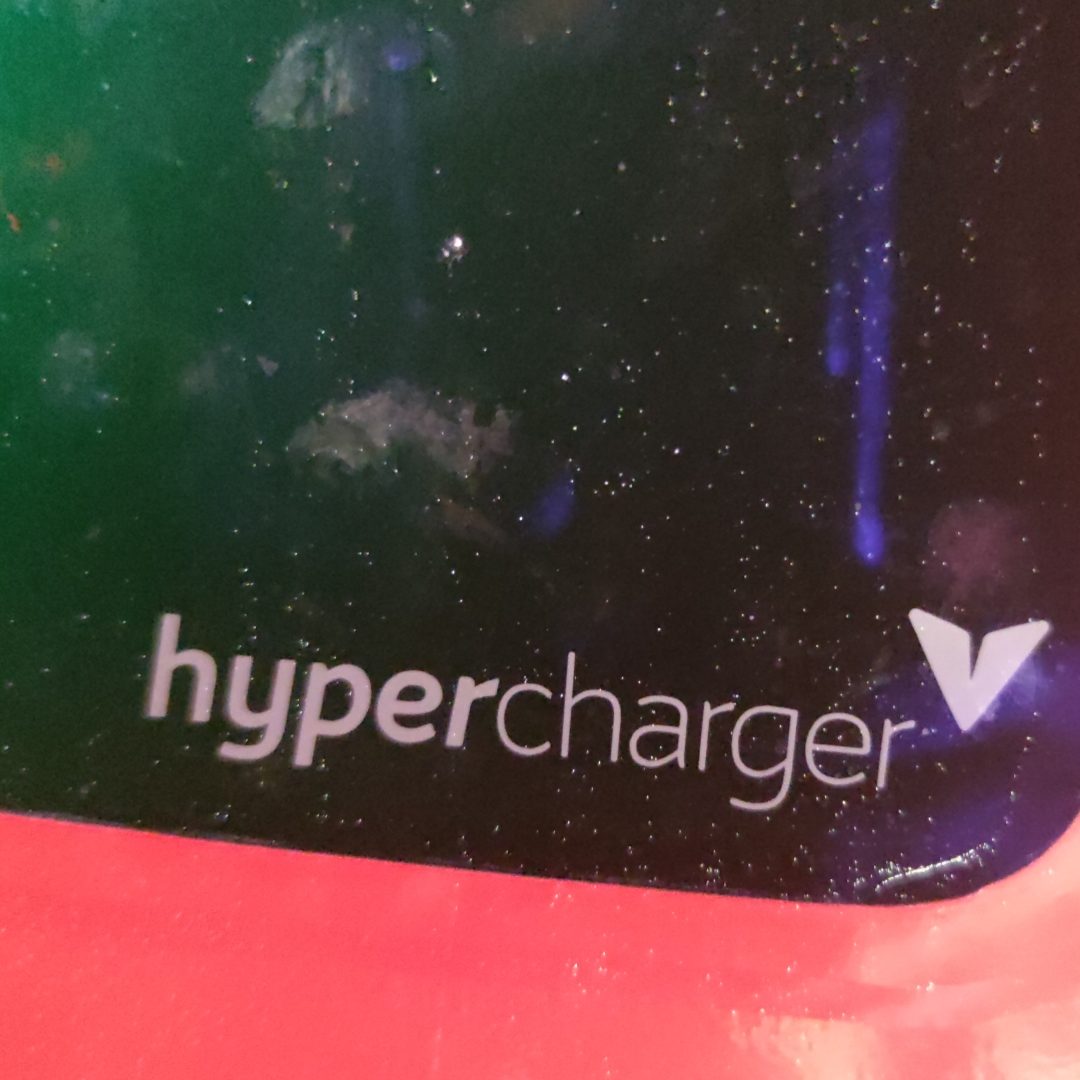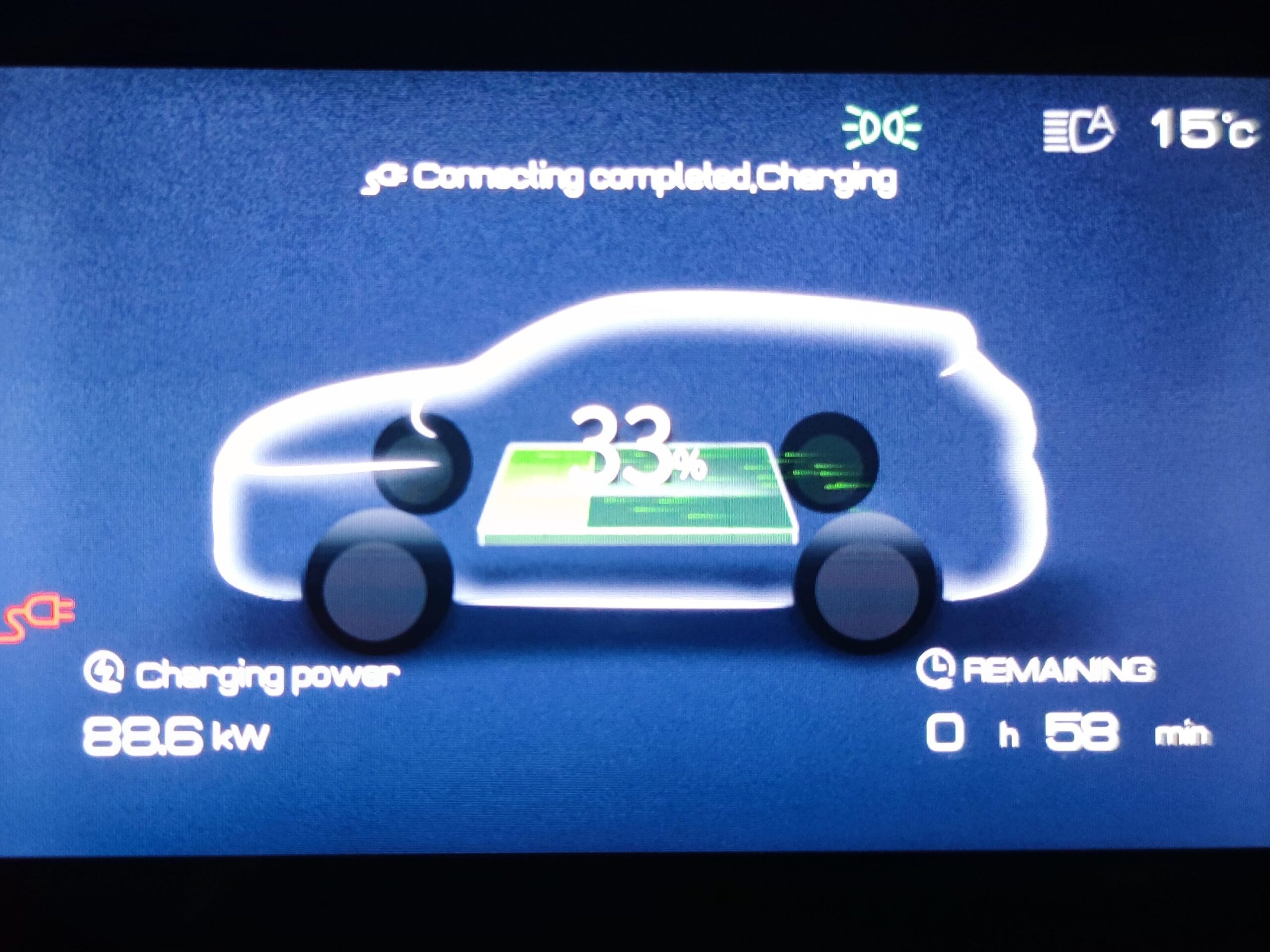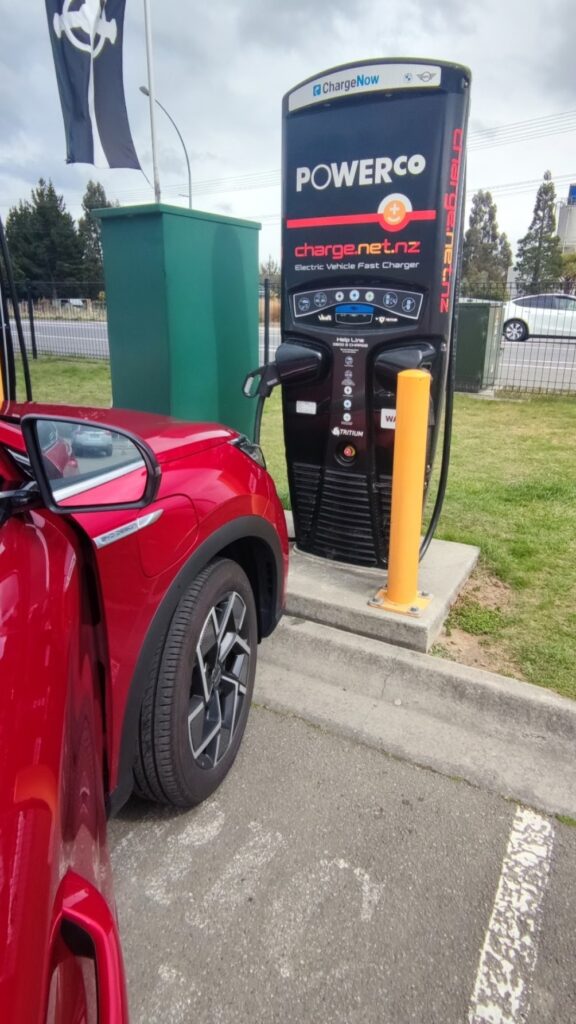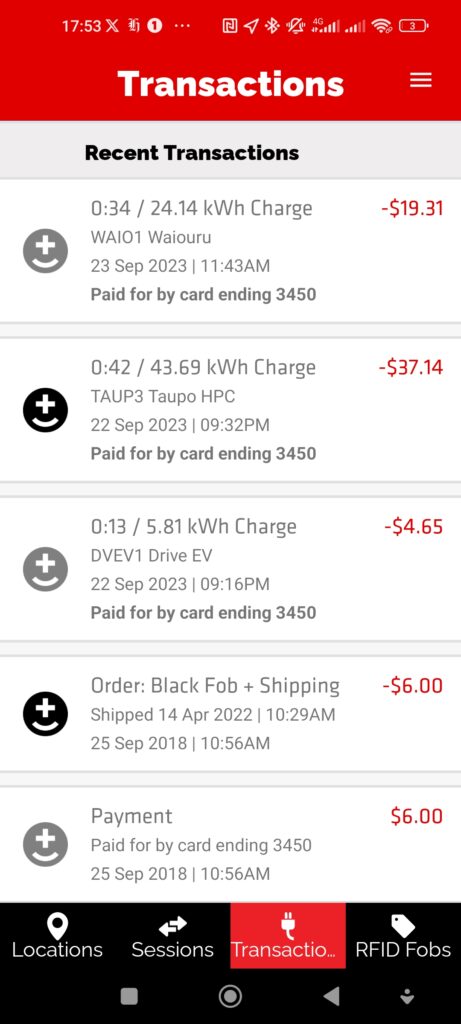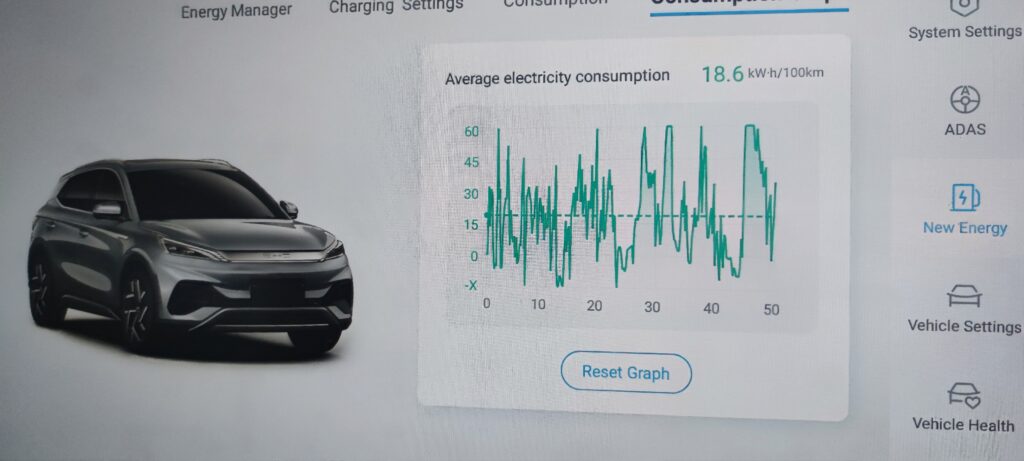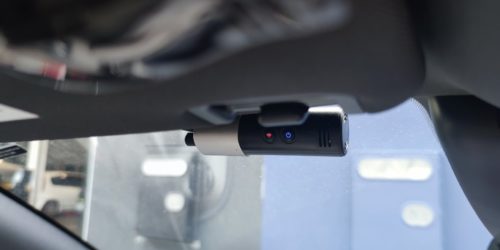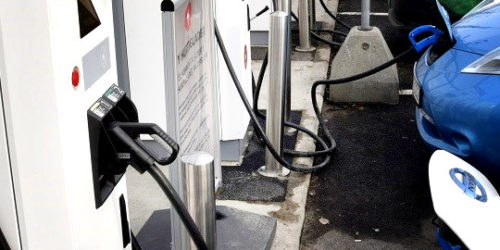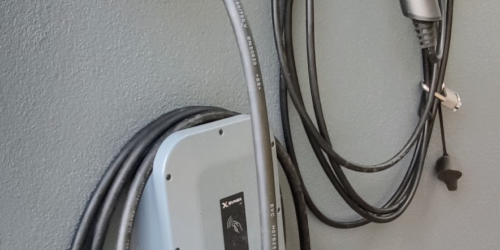700km Drive in the Atto 3
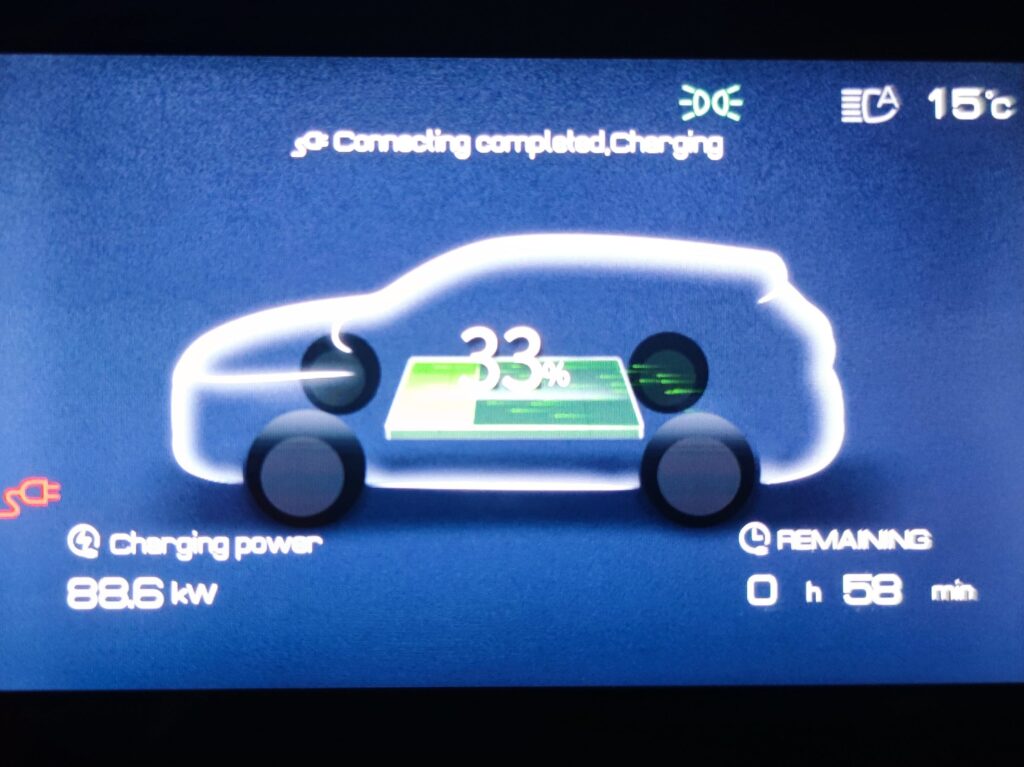
Minor Updates, 2&3 October 2023 with total trip estimates, more photos and some final words.
We drove our BYD Atto 3 from Auckland to Wellington, and this was the first long distance trip we have taken it on. So how was the charging and how much did it cost?
Summary for the TL/DR crowd
From a full charge at home, 2 charges en-route was all that was needed. No major issues except for a broken fastcharger in Taupo, a cable what was too short in Waiouru and maybe a bit more research showing exactly where to stop (and exactly where the chargers are positioned in each location) would have helped us.
Total cost for a 670km journey was around $61. We were slightly surprised at how expensive the unit rate for charging is compared to the domestic rate, but that is still around a third of what driving our petrol vehicle would have cost us so a great result despite minor hiccups.

More details below, with a note about the equivalent petrol costs and future RUCs at the end.
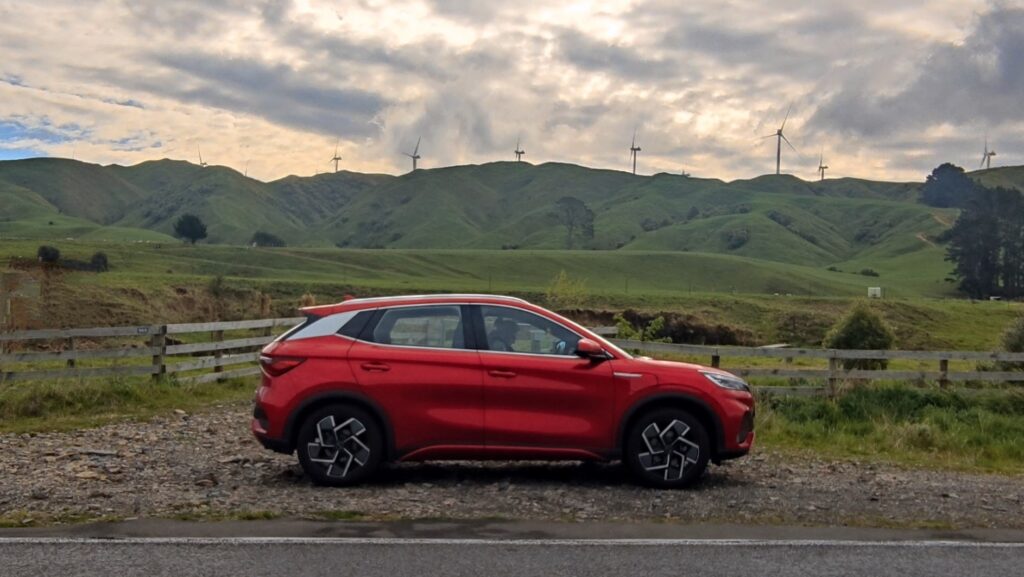
Leaving home
We mostly charge at home, and have a Contact Energy plan that gives us free power from 9pm to 12am. So, essentially we left with free energy (at about 98% charged, as we had made a quick trip up to the shops beforehand)
First drive was to Taupo (overnight), and we knew we would have to stop for charging sometime there or after that. I knew there were a few chargers there, but didn’t actually check what was there beforehand or look at an app. Some planning would have been helpful as it turned out, but I was really keen to see if we could just ‘up and go’ as we would have in our fossil fuel cars.
After a drive of 260.5kms (watching a mapping app and comparing with our range display), we arrived at our destination in Taupo. Our hosts did offer their house power for a charge… but at an approx charge time on 8 Amps of about 10kms/ per hour this wouldn’t really help (probably 36 hours total to fully top up).
After dinner (around 21:30) I started up the Chargenet app and looked for a place to hook up.
Were there other brand chargers around? Not sure, but Chargenet is the biggest and been around since the beginning so wanted to support them first.
Broken fast chargers…
The closest Chargenet charge location was nice and visible and beside about 4 Tesla chargers – this Chargenet unit was a single (50kW) CCS/CHAdeMO combo. I realised I didn’t have my Chargenet RFID fob (I had ordered one ages ago, and never needed it since), but knew it didn’t really matter as I had the phone app and good network signal.
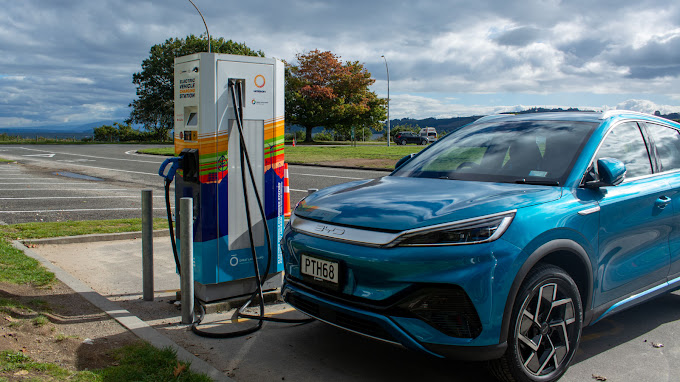
Or so I thought. I couldn’t get it working, so called the Chargenet 0800 number.
I spent around 20 mins on the phone to the Chargenet helpline to try and get it working – no joy. The unit recognised being plugged in, but the app wouldn’t start it and they couldn’t reset it remotely (local reset button not working either).
Broken chargers en-route is one of the most common reported anxieties when planning a long trip. It is fine when there are bigger places with multiple charge options, but many small towns only currently have one place you can top up. If they break, or fault and there are lots of people trying to use them on a busy day this can create a fair bit of chaos. To be fair, Chargenet answered the phone and were very helpful (and hey, they are at least investing in NZ), but there was nothing they could do from a distance.
Slow… fast chargers…
So I drove off to another location near McDonalds and saw the DriveEV building which I recognised from photos. They had an early Tritium 50kW CCS/CHAdeMO combo as well as a couple of Level 2 Evnex boxes (the level 2 boxes were on chargenet, but they had Leafs in them that I assume were their own?). A Leaf was also charging on the DC charger, but he was gone after a few mins (and I was really in no hurry).
Hooking up to this was easy enough. It is a bit annoying on the app that sometimes that the IDs for the chargers aren’t very bold or intuitive, and when selecting on my phone it says I am 450m away from the charger for some reason (this usually happens). I activated it fine once I figured those things out, and maybe it is a phone issue.
Weirdly though, the charger only delivered 25kW… if I wanted anything close to a full topup I’d be there for 2 hours! The price for this charger was 80c/kWh (with no waiting time if you go over once charging stops).
Charging at home is always cheaper (and some can be had for free with solar or offpeak plans). Charging on the road can be more than 4 times as expensive for the same unit of electricity. Hopefully this will change over time and with more competition. But of course still a lot cheaper than current petrol/diesel pricing.
Fast(est) chargers.
Once charging here I remembered seeing one more charger on the app nearby so thought I’d go for a wander. There I found the Chargenet 300kW “hyperchargers” – two of them, and each will do 2xCCS and 1xCHAdeMO, just beside the local Burger King drivethrough.
No other users, except for a large bus on the far side so bought the car over for the rest of the charge. So… although it was slightly more expensive (85c/kWh) I bought the car over to see what it would do.
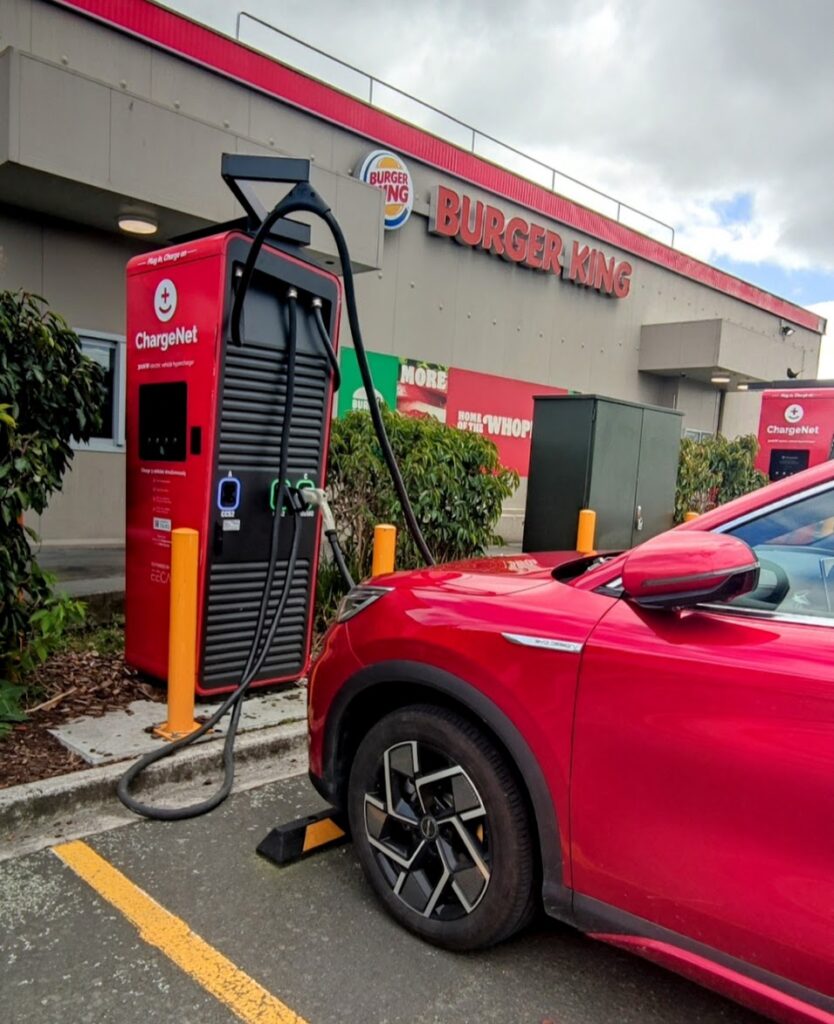
Why didn’t I go there first? well I probably should have looked more carefully on the app, but again I didn’t think the signage in the carpark was great, it was dark, and also I didn’t even think to check the charging speeds on the app initially.
At a max power of 88.6kW (around the max that the Atto can pull) in another 42mins the Atto was near fully charged. Much nicer that waiting 2 hours. Apparently these are the fastest available chargers currently in NZ.
Total cost on the Chargenet app? $4.65 for the DriveEV charge and $37.14 for the hypercharger, for a total cost of $41.79 for the total drive to Taupo. Total time spent charging here was 55 mins.
A handy hint with this Hypercharger, if you are unsure if the lead will reach… take the left hand one. As you can see on the photo, it has a large swing-arm on the top and will reach just about anywhere!
Next day, next charge stop

Next stop (next morning) was Waiouru. We didn’t actually plan where we would stop and passed a few chargers on the way, but that was about the time we wanted an early lunch.
Outside the army museum on the road was the standard Waka Kotahi “EV Sign” and although we followed it, there wasn’t actually great directions once we turned into the Army Museum (you could go left to the carpark, or straight ahead). Turns out it was at the end of the carpark – two parks with the 2 basic 50kW Tritium units again.
Apart from the location finding, the only other complaint I’d have was that the cable for CCS was really too short for the Atto. I nosed in, and tried to reach, then and had to get back in to move further forward as far as I could (and slightly to the left in the carpark, which no doubt annoyed the next person to park beside me – sorry about that)
The actual carpark was very busy, not many parks at all when we arrived. Only one of the two charge points were utilised when we got there though (11:15 on a Saturday morning… ahead of school holidays), and nobody else turned up to charge until we were just about to leave.
Charging was easy, obviously we didn’t ‘have’ to top up, but certainly wouldn’t have made Wellington without an additional charge at some stage on the trip. We spent 32 mins there, and from memory it stopped at 95% (I had pushed the 100% button on the unit).
This was perfect timing for us, having had lunch and a look around and the apps (BYD and Chargenet) gave us the info as needed so we could keep an eye on things.
Cost for this charge was $19:31 for a 31 minute, 24kWh topup.
Final drive to Wellington
It was pretty clear we could do the rest of the drive with no other (charging) stops. We made it to our destination with 55kms on the ‘Guessometer’ for a total distance travelled of 668.3kms.
So total cost for the trip in electricity was $61.10
How efficient overall?
The Average Energy Consumption graph on the Atto is pretty useless really (no zoom, or realistic x axis etc) but there is an average display of consumption for the trip if you remember to reset it. Luckily I had, so that shows the average was 18.6kWh/100kms (which equates to 5.38km/kWh).
I’ve definitely had more efficient trips than this in the Atto (16kWh/100kms is common) but I was certainly not efficient in my driving and many of the roads were 100km/h or even 110km/h with most of it though rain. Temps were certainly not warm either, which usually contributes to less efficiency in an EV.
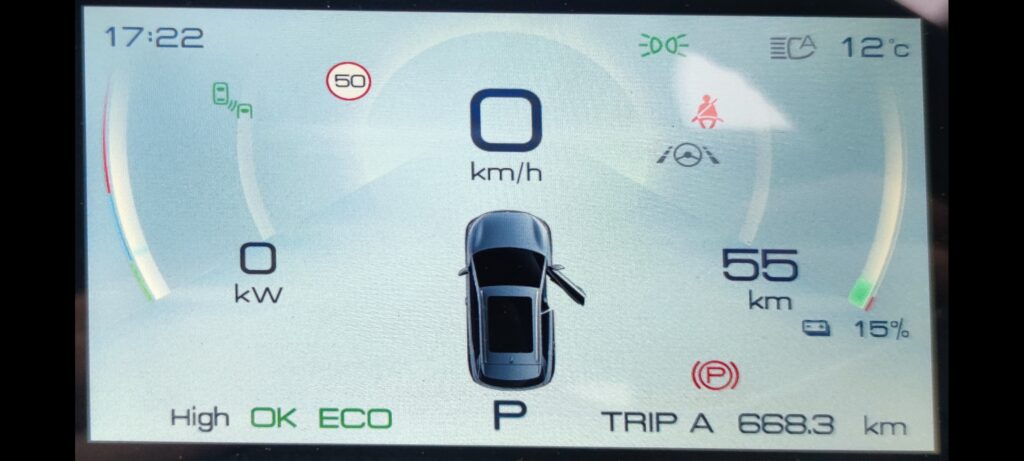
Comparison to Petrol
I’ve done this trip plenty of times in other vehicles, so what would it have cost in our previous people mover? This did around 8.8L/100kms, so a trip of this distance would have used $59L of fuel. At an average shown of $3 per L, this is a trip price of $177.
So using the Atto was 35% the cost of our petrol vehicle for the one way trip.
I also did a calculation for the entire holiday in Wellington and back. It is skewed by the fact that we had some free destination charging at the place we stayed, but this wouldn’t be unusual. Our total trip was 1820kms. Total payment for electricity was $146 (we spent more on the return, but arrived back with about 120kms range on the display). Again, a calculation of petrol cost would be around $480.
For the whole trip, (incl some free destination charging) equates to 30% the cost of taking our petrol car.
Could it have been cheaper?
I know we could have saved money – most charges were at the very expensive Chargenet hyperchargers. But this was a realistic trip, close to what we’d have done in a petrol car with no real inconvenience due to stopping.
To save money:
- Using a Z Charger is 20% less than Chargenet costs. There are not many around, but they are getting more common and they have a bunch of decent speed chargers with most over 75kW. There are BP and other networks with cheaper options.
- If we was prepared to stop more and use AC charge, eg stopping overnight at places with wallchargers, or shopping malls for a few hours. Pretty inconvenient though and not worth it for us on this trip.
- We could have an EVerywhere plan with the power company Genesis and save 70% on Chargenet costs. Not worth it for us due to our current home plan savings, but if you were often travelling this would likely be a no-brainer.
I’m sure with more competition the cost of travel charging en-route will come down, more will come available and charging speeds will come up. Various charging companies are starting to open up their own systems. Even Tesla are now opening up some of their charging locations to non-Tesla users (but the cost is currently high).
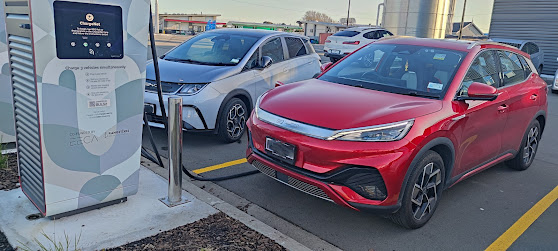
Will RUCs mean EVs are too expensive?
This is the current question being debated, especially as it is election year. Nobody knows exactly if/how RUCs will be added, and if so what the cost will be for EVs, PHEVs and Hybrids. If we based it on a standard current RUC for diesel vehicles, this equates to $76/1000kms driven.
RUCs at current rates would have added just on $50 to this one way trip.
That’s a big difference, but still only ~60-65% the cost of the petrol trip, at current Chargenet pricing.
Final words on our BYD Atto 3 trip
- Range anxiety is still real. We’d get close to 100km remaining and think about charging… then remember our leaf has 100km as its full range…
- I’d still really want to do a bit more pre-work before a trip to see which chargers are best (speed, access, past reliability). Maybe look at photos of their location and overviews on google maps.
- I’ll turn off the ICC/LKS when overtaking in future, (or keep the indicator on throughout to disable it). Overtaking a long truck at speed was interesting… it tried to centre me in the oncoming lane and also actively bounced me back from the centre line a couple of times and when returning back into the left hand lane.
- I didn’t realise that the DVR automatically records/stores on a sudden deceleration. Had a car in front quickly stop and so did we – it recorded/locked the footage. Nice.
- Eco mode vs sport seems to make little difference to overall efficiency. It is however annoying when you put your foot down and try to pull out into traffic in Eco. In fact weirdly I got better efficiency on the 2nd half of my trip using sport mode. (overall trip consumption was actually a respectable 15.7kWh/100kms)

